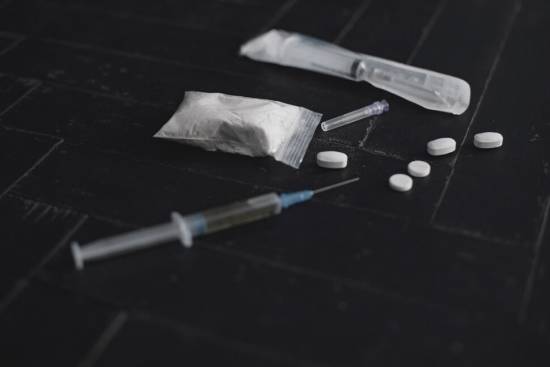A new analysis of disparities in overdose deaths from the Centers for Disease Control and Prevention highlights stark relationships between drug fatalities and specific social determinants of health in the U.S., particularly among Black and Hispanic communities.
The analysis of data from 25 states and the District of Columbia published Tuesday shows that the rate of death from drug overdoses of unintentional and undetermined intent increased by 44% among Black individuals from 2019 to 2020, from 27 deaths per 100,000 population to 38.9 per 100,000.
At the same time, the death rate among American Indian or Alaska Native people rose by 39% – from 26.2 per 100,000 to 36.4 per 100,000 – and by 22% among white individuals, from 25.2 per 100,000 to 30.7 per 100,000. The rate rose by 21% among Hispanics, from 17.3 per 100,000 to 21 per 100,000, and stayed relatively stable among Asian or Pacific Islander individuals.
Broken down by age and race or ethnicity, Black teens and young adults from 15 to 24 years old experienced the largest relative rate increase in drug overdose mortality between 2019 and 2020, at 86%. Large increases also were found among older Black men, with the rate among those 65 and older (52.6) increasing to nearly seven times that of white males within the same age range (7.7).
Notably, the study found the rate of overdose deaths in 2020 increased alongside income inequality at the county level among most racial or ethnic groups, with Black and Hispanic people particularly affected.
For example, the overdose rate for Black individuals living in counties with the highest level of income inequality was 46.5 per 100,000 in 2020, according to the study – more than twice the rate among those living in counties with the lowest income inequality. The overdose death rate among Hispanic individuals living in counties with the highest income inequality was 28.1 deaths per 100,000, also more than twice as high as the rate among Hispanics in counties with the lowest income inequality.
And while the relationship between income inequality and the overdose death rate differed somewhat among American Indian or Alaska Native individuals, this group had the highest mortality rate in counties with the lowest level of income inequality.
The study’s findings additionally indicate significant barriers to access for drug treatment and preventative care exist for racial or ethnic minority groups, even in areas where such resources are comparatively more readily available.
Overdose death rates, according to the study, were higher in counties with more mental health provider availability. Among Black individuals in 2020, the mortality rate was more than 2.5 times higher in areas with the highest availability of mental health care providers compared with areas that had the lowest rate of providers.
Similarly, the rates of opioid-involved deaths among both Black and American Indian or Alaska Native people were much higher in counties home to at least one opioid treatment program compared with counties without such a program. And in counties where more treatment with buprenorphine – a medication to help combat opioid-use disorder – was thought to be available, opioid overdose death rates increased by 49% year over year among Black individuals and by 55% among American Indians or Alaska Natives, compared with 19% among whites.
The study also found that lower proportions of minority groups had received treatment for substance use compared with white people prior to their overdose, with only 1 in 12 Black individuals having received treatment while among American Indian, Alaska Native and Hispanic people, about 1 in 10 had previously gotten such services.
“Higher potential treatment capacity might not reflect treatment services that are accessible to community members, especially in counties that cover large geographic areas,” the study says. To help curb access barriers, it calls for interventions like harm reduction services involving fentanyl test strips and the overdose-reversal drug naloxone.
“Implementation of an evidence-based, culturally responsive, multi-sectoral approach is critical to reducing disparities in overdose rates,” a summary of the study notes.
Mbabazi Kariisa, a health scientist with the CDC’s Division of Overdose Prevention, said in a call with reporters Tuesday that certain factors, including lack of transportation to a facility and a lack of insurance, are likely contributors to the lower rates of previous treatment found among minority populations.
“Just because there’s availability of services doesn’t mean that those services are actually accessible,” Kariisa said
The study’s findings add to mounting evidence of the disproportionate racial toll taken of late by the nation’s opioid epidemic – the primary driver of drug overdose deaths in the U.S. and a crisis whose narrative initially focused primarily on white communities.
One study published in January, for example, found an increasing opioid overdose death rate among adults ages 55 and older had been driven heavily by a rising rate of such deaths among older Black men. A second study published in March found the overdose mortality rate among Black people had increased by nearly 50% from 2019 to 2020, which resulted in the rate among Black people surpassing the rate among whites for the first time since 1999. ]
Overall, approximately 91,800 drug overdose deaths occurred in the U.S. in 2020, a 30% increase from 2019.
“While we have made so much progress in treating substance use disorders as chronic conditions rather than moral failings, there is still so much work to do, including making sure that all people who need these services can get them,” said Dr. Debra Houry, acting principal deputy director of the CDC and director of the agency’s National Center for Injury Prevention and Control./US NEWS


